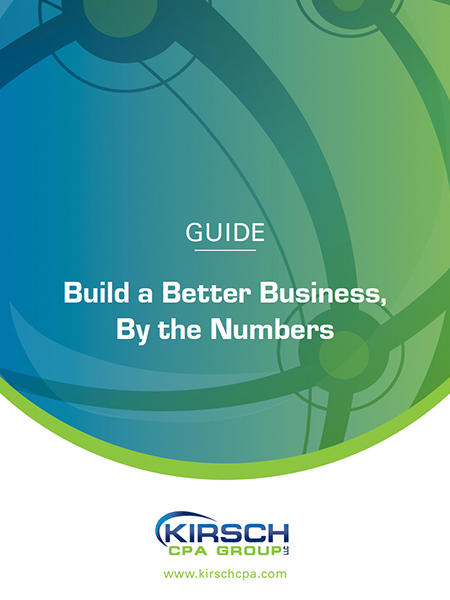Tackle Key Financial Issues as You Face Retirement
Mar 24, 2016

The Baby Boomer generation reached its peak in 1957 at an annual birth rate of about 4.3 million people. It’s hard to believe that these Baby Boomers will turn 59 years old in 2016. An important rite of passage that comes with this age is that they’ll soon be eligible to withdraw funds from their qualified retirement funds without incurring the 10% early withdrawal penalty. But this is just the start of milestones they’ll encounter as they face retirement.

Like many 60-somethings, these Boomers might not be ready — emotionally or financially — for full retirement. Ready or not, there are key financial decisions everyone needs to eventually make and reasons you can’t afford to ignore financial matters as the golden years approach.
Age 59 1/2: Withdraw Retirement Funds without Incurring Penalties
Once you hit age 59 1/2, you can take money out of your IRAs, 401(k) plans, pensions and tax-deferred annuities — for any reason whatsoever — without incurring the 10% early withdrawal tax penalty. Obviously it’s unwise to go on a spending spree at age 59 1/2, because these funds must last for the rest of your life.
Now is the time to budget how much to draw on your retirement savings and when. Also remember to consider taxes. Distributions from traditional IRAs, 401(k) plans and other employer-sponsored retirement plans are taxed as ordinary income. That’s because original contributions to these accounts were tax deductible.
However, earnings on qualified distributions from Roth IRAs can be taken on a federal income-tax-free basis. That’s because contributions to these accounts weren’t originally tax deductible. (A qualified distribution is one made after age 59 1/2 and at least five years after contributions to the Roth IRA began.)
Age 62: Decide When To Receive Social Security Benefits
You qualify to start receiving Social Security benefits at age 62, based on your work history or your spouse’s work history. But if you decide to take benefits before your full retirement age, they’ll be reduced at a rate of 0.5% for each month you begin taking Social Security early. When making this decision, look at your health and family history of longevity.
Your full retirement age depends on when you were born. For example, people born in 1957 will be eligible to receive 100% of their benefits when they reach age 66 1/2 years. Those born in 1960 or later must reach age 67 to be eligible for full benefits.
Alternatively, you may delay receiving benefits until after your full retirement age. In that case, your benefits will increase by 8% annually. Under current law, this increase will be automatically added each month from the moment you reach full retirement age until you start taking benefits or reach age 70.
If you continue to work and start receiving benefits before full retirement age, your benefits will be reduced by $1 for every $2 in earnings above the prevailing annual limit of $15,720 in 2016. If you work during the year in which you attain full retirement age, your benefits will be reduced by $1 for every $3 in earnings over a different annual limit of $41,880 in 2016 until the month you reach full retirement age. Once you have attained full retirement age, you can keep working and your benefits won’t be reduced, regardless of how much you earn.
Full benefits from Social Security typically replace about 40% of an average worker’s income after retiring. Benefit levels are adjusted annually for the cost of living. But, there’s no cost of living increase scheduled in 2016. Depending on an individual’s overall income (or the combined income of a married couple that files a joint tax return), some portion of Social Security benefits might be subject to income tax.
When you start receiving Social Security, other family members may also be eligible for payments, including qualifying children and current (and former) spouses. In addition, your family may continue to be eligible for a percentage of your benefits after you die.
Age 65: Choose Medicare and Medigap Coverage
The Social Security Administration recommends applying for Medicare benefits three months before you reach age 65. If you elect to receive Social Security benefits before your full retirement age, you’ll automatically be enrolled in Medicare Parts A and B without an additional application.
Hospitalization coverage. Medicare Part A covers a portion of your costs for a semi-private room during your stay in a hospital, skilled nursing facility or hospice, after you pay an initial hospital stay deductible. It also covers some home health care. Medicare only pays for up to 100 days in a long-term care facility and only following a qualified hospital stay. Other rules and restrictions apply.
If you or your spouse paid Medicare taxes while you worked, you’re generally eligible for Part A coverage for free. If you’re not eligible for free coverage, you can pay a monthly premium in 2016 of up to $411, depending on your income.
Medical insurance coverage. Even if you don’t qualify for Medicare Part A coverage, you may be eligible to enroll in Medicare Part B coverage. Part B medical insurance covers doctor bills for treatment in or out of the hospital, as well as the costs of medical equipment, tests and services provided by clinics and laboratories. It doesn’t cover other medical expenses, such as routine physical exams or medications.
When Medicare Part B covers an item, it generally pays 80% of the amount it approves (after a $166 deductible in 2016) and you pay the remaining 20%. However, Part B covers 100% of approved charges for home health care, clinical laboratory services, and flu and pneumonia vaccines.
Part B coverage costs $121.80 a month in 2016 when an individual has an annual income of $85,000 or less ($170,000 or less for married couples filing joint tax returns). People with higher annual incomes pay higher premiums.
Medigap coverage. This fills the gaps that exist in Medicare, such as co-payments and co-insurance. It’s usually a type of private health insurance that’s governed by federal and state laws. In some cases, you might opt for Medicare Part C coverage, which may function like a Medigap policy administered by Medicare.
The optimal time to buy Medigap insurance is within the first six months you’re at least 65 years old and enrolled in Medicare Part B. That way, you won’t need to undergo a medical underwriting. For those with existing health conditions, this enables them to buy a policy at the same price that is charged for people in good health.
Important note. Before you travel outside the United States, find out whether Medicare will cover you while you’re away. Generally, the coverage is limited or nonexistent. If you don’t have coverage when traveling overseas, you can purchase supplemental policies to cover medical expenses incurred outside the United States, including evacuations.
Prescription drug coverage. Medicare Part D covers prescription drugs. The premium you pay today is based on your income as reported on your IRS tax return from the last two years. So if your income from 2014 was above a certain limit, you’d currently pay an income-related monthly adjustment amount in addition to your plan premium.
Individual taxpayers who had income of $85,000 or less in 2014 (or married couples filing jointly with income of $170,000 or less in 2014) would currently pay no additional premium for Part D coverage. The highest monthly premium for Part D coverage is $72.90 (plus your plan premium) for individual taxpayers who had income above $214,000 in 2014 (or married couples filing jointly with income above $428,000 for 2014).
Important note. You may be charged a late enrollment penalty if you go without credible prescription drug coverage through Medicare Part D or another source for any continuous period of 63 days or more after your initial enrollment period ends (three months after the month you turn 65).
Age 70 1/2: Take RMDs — or Else
Many people are surprised to learn that the IRS generally mandates annual distributions from traditional IRAs and qualified retirement plans once they reach age 70 1/2. You also must pay income tax on these required minimum distributions (RMDs). No mandatory distributions are required from Roth IRAs while the original owner of the account is alive.
RMDs are based on your account balance and life expectancy. The initial RMD is for the year you turn 70 1/2, but you can postpone that payout until as late as April 1 of the following year. If you chose that option, you must take two RMDs in the following year: The first must be taken by April 1, and the second must be taken by December 31. For each subsequent year, you must take RMDs by December 31.
The penalty for not taking your full RMD on time is severe. You’ll owe 50% of the amount you should have withdrawn but didn’t. RMDs also must be taken from inherited accounts.
Important note. An exception to the RMD rule is permitted for taxpayers who continue working after they reach age 70 1/2 and don’t own more than 5% of the company. These people can postpone taking RMDs from their employer plans until after retirement. However, they must still take RMDs from qualified plans that remain at former employers (that is, the plans that haven’t been rolled over to their current employer’s plan).
Before Your 60th Birthday Hits
Concerns about rising medical costs, longer life expectancies and insufficient retirement savings are forcing many people to stay in the workforce longer than expected. Regardless of whether you continue to work in your 60s and beyond, the government requires you to make important decisions about retirement benefits and health care coverage as you reach certain ages. These requirements won’t cover all the financial contingencies that you’ll eventually encounter, however.
It’s also important to address other financial issues, including whether you should switch to annuities or other less aggressive investments once you retire. In addition, you might consider how you’ll pay for long-term nursing and home care, without depleting the value of your estate.
Ideally, you should meet with your financial adviser before you turn age 60 (and beyond) to review your retirement plans. He or she can help you evaluate your investment portfolio, manage monthly living expenses, understand Medicare and long-term care options, and decide when to take Social Security benefits and withdrawals from retirement accounts and pension plans. Kirsch CPA Group can help you understand the implications on your tax return, give us a call at 513-858-6040. Planning ahead can help minimize the stress and maximize the upsides of retirement.
Sign Up for Email Updates
Accounting & Financial News

Small Business Owners: Beware of Common Payroll Blunders
Managing payroll can be a major challenge for small business owners, especially as state and federal payroll…





